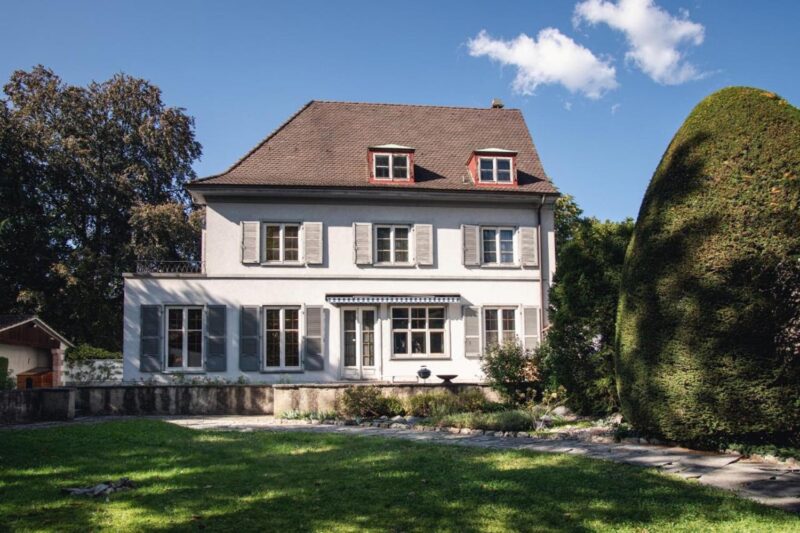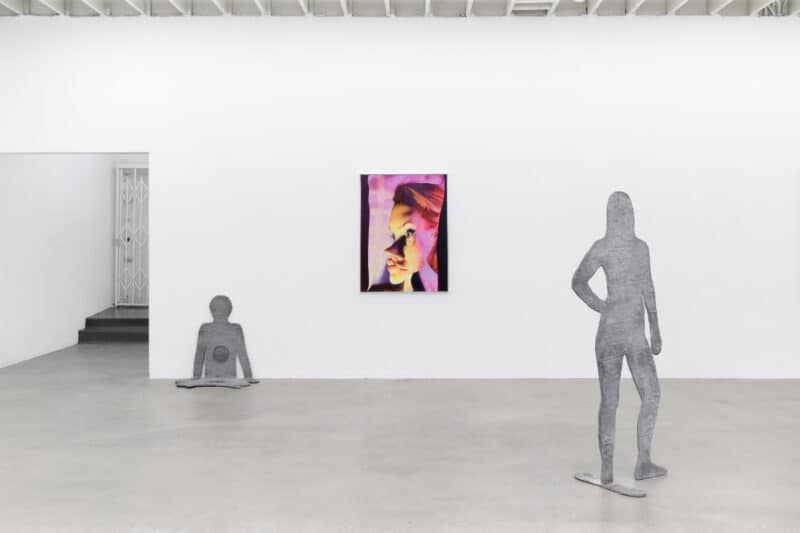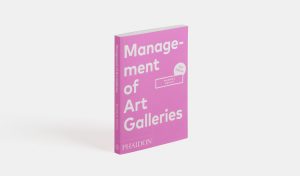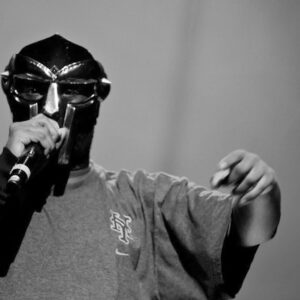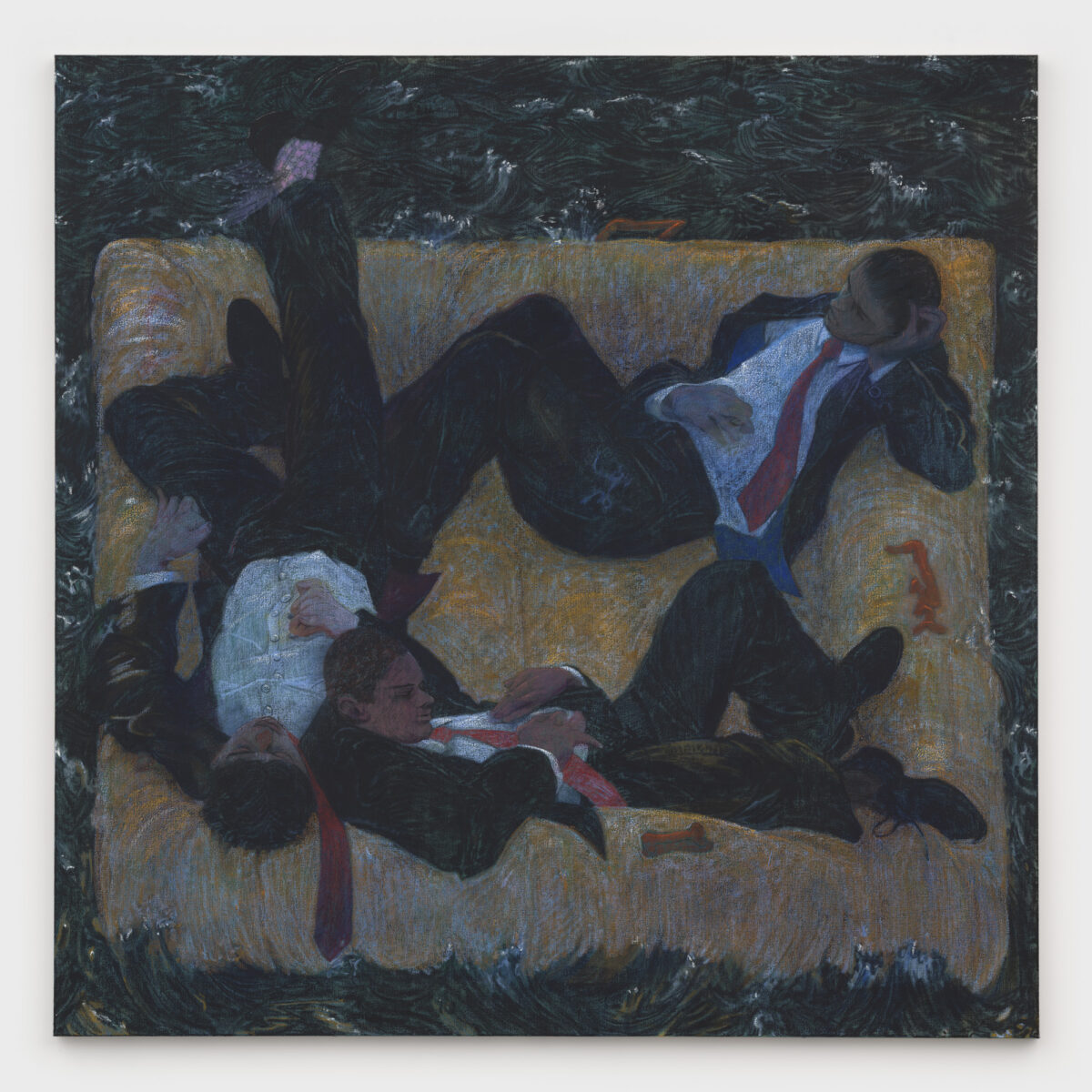
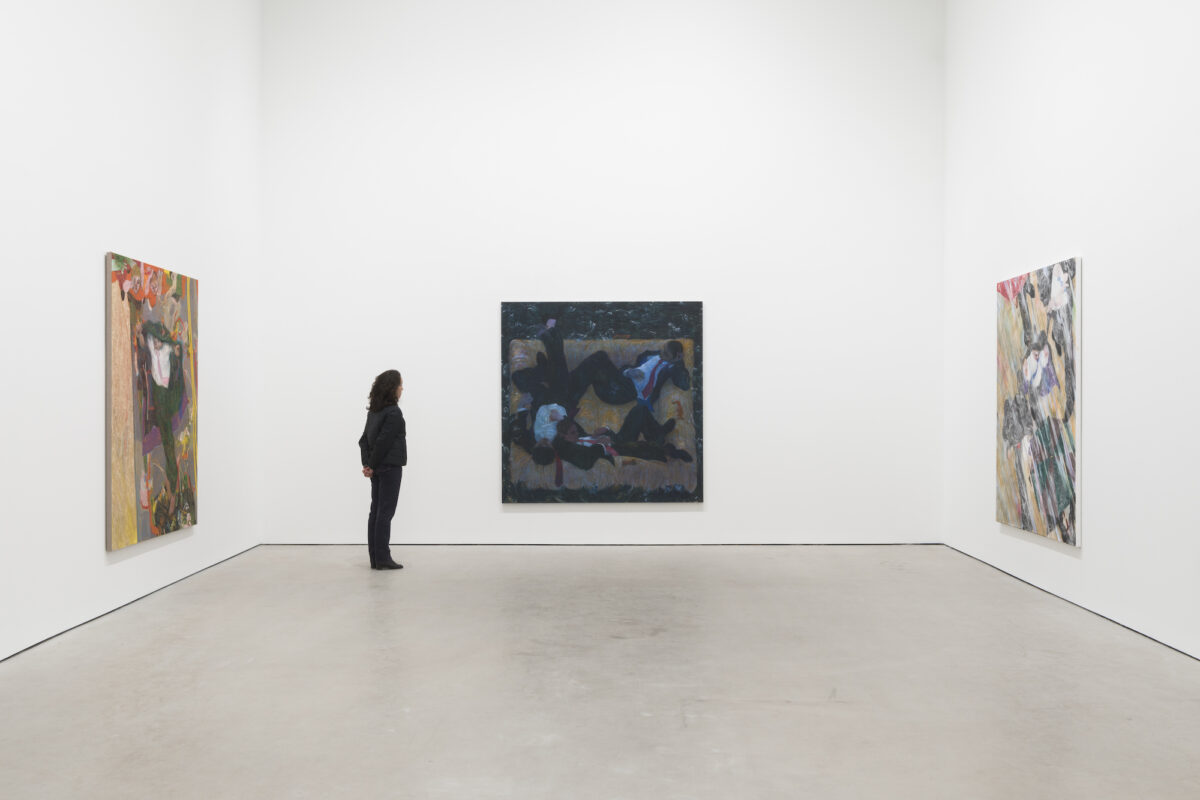
The implicit speed in Henry Curchod’s paintings comes from within, as he depicts figures melting into exaggerated conditions. These bodily situations are marked by subtle displeasures or else banal acceptance of their bizarre circumstances. Curchod documents an ongoing interest in social hierarchies and, as such, his images often feature ill-fitting suits that underscore the precarity of status.

His procedure of image construction consists of the following; He begins by sketching lightly with oil sticks in order to substantiate a false background that can be fought against. This initial stage is where his visual world finds its legs, after which point Curchod moves through the composition by reacting against his own marks. After the base layer is suitably developed, he dips choice tools
such as brushes, sponges, and rags into turpentine and coerces the medium into gestural marks. Finally, Curchod disburses his oils and charcoal in order to further eke out representational objects.
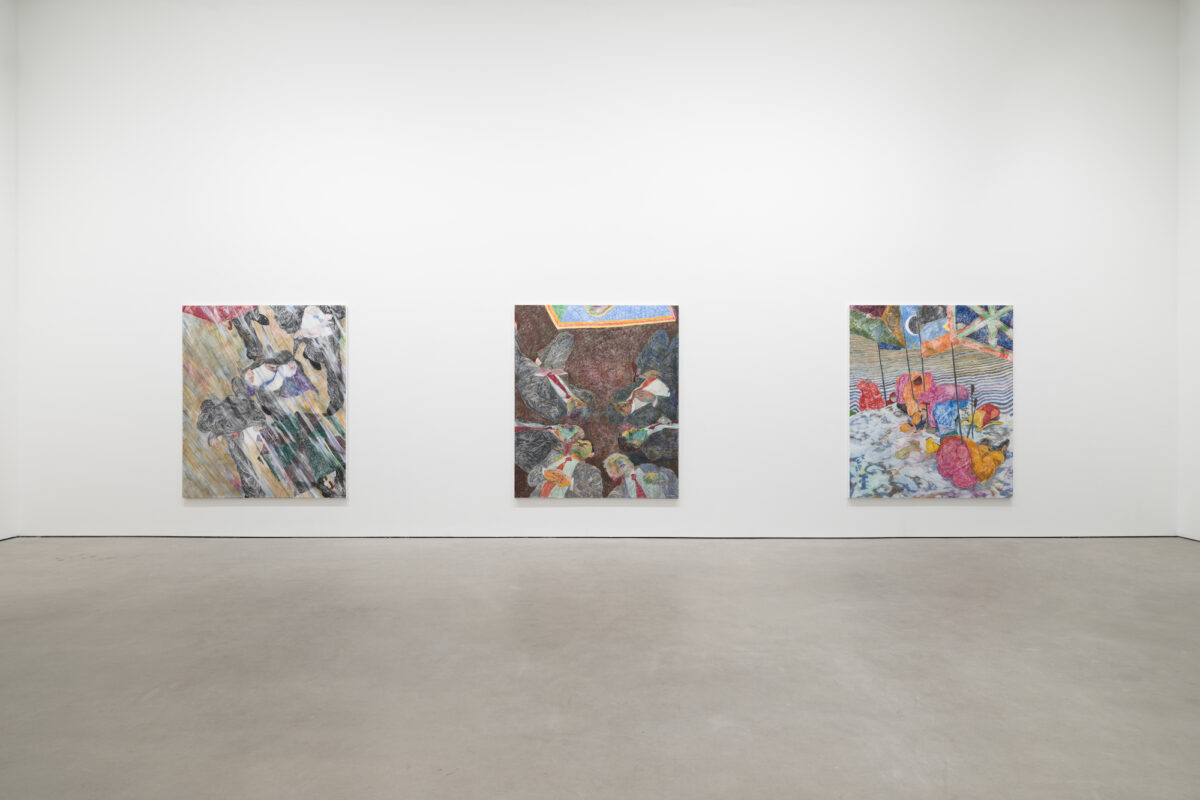
This specific procedure is part and parcel of the artist’s awareness of new digital technologies, which have been subsumed into the vortex of contemporary practice. Insofar as painting tends toward progress, Curchod notably rejects his own absorption into the medium’s conceptual plight. Instead, he embraces a rather classical approach to the medium, sans digital infiltration. In a contrastive move, the logic of Curchod’s content is in opposition to such historicity. He craves the reflection of the time we
currently occupy, rather than criticism or romanticism of the past or commentary on the future.
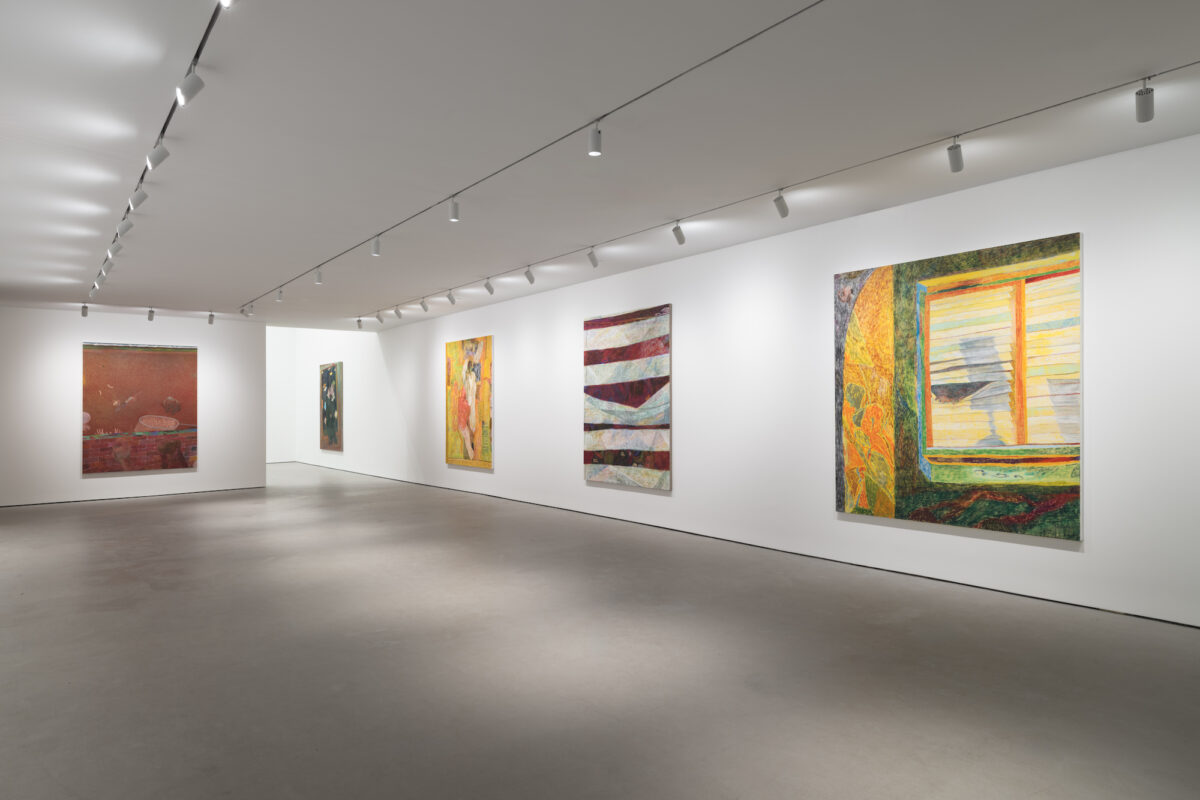
Following suit, Curchod’s work relates to the novel A Confederacy of Dunces, which unravels as a cacophony of events. The staccato rhythm of John Kennedy Toole’s writing lends itself to the book’s landscape-less meandering. The narrative tracks concurrent storylines that interweave and produce an offbeat conglomeration of events. Toole and Curchod relate in that they don’t prescribe a particular narrative, instead they apply nebulous plot points that allude to a unified whole rather than defining a
totality.
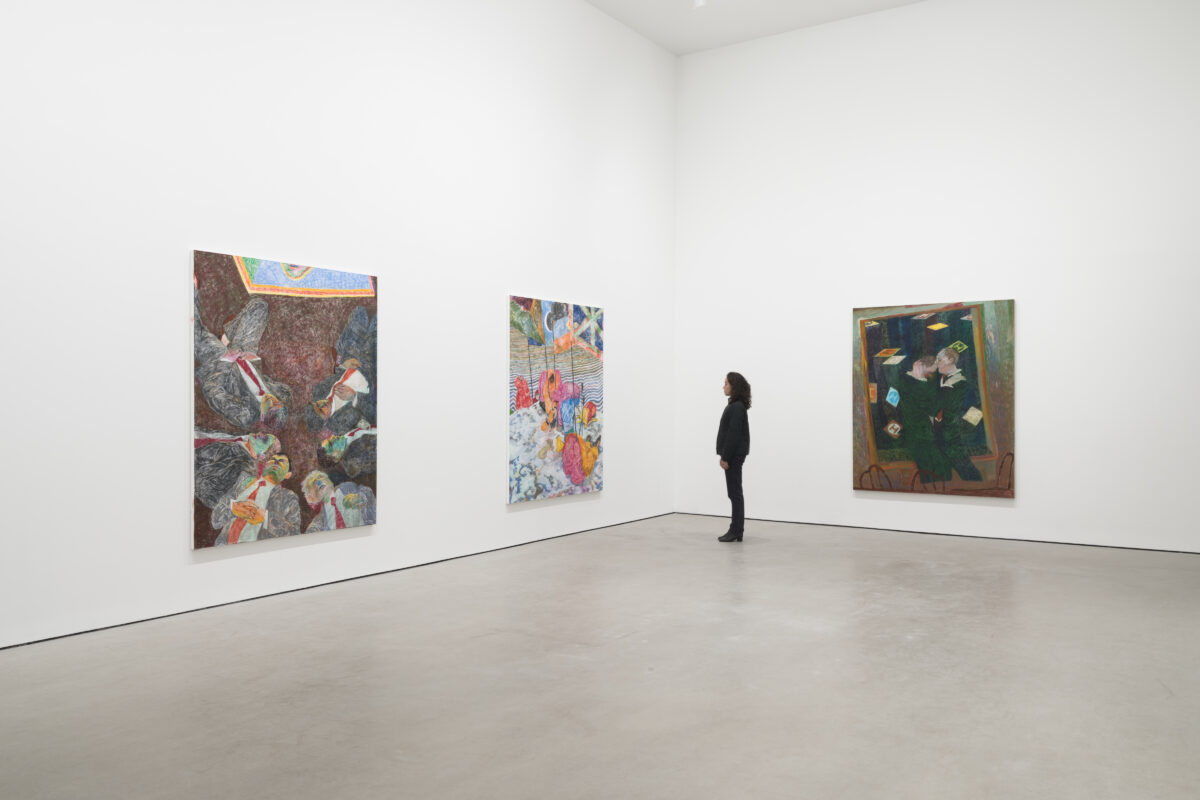
Toole’s novel pokes holes into capitalist strategy, a failing system that Curchod remains attuned to. Ignatius Reilly, the unconventional protagonist, is hostile toward the pecking order that he observes. As such, his disposition toward and treatment of societal organization is not unrelated to Curchod’s own conceptual exploration. Moreover, the exhibition’s title is culled from Reilly’s attachment to the goddess Fortuna and her wheel of fortune (also referred to as the rota Fortunae). The novel’s sour antihero claims that her wheel propels him ever downward, and his own (self-spun) alienation is actually a result of Fortuna’s will.
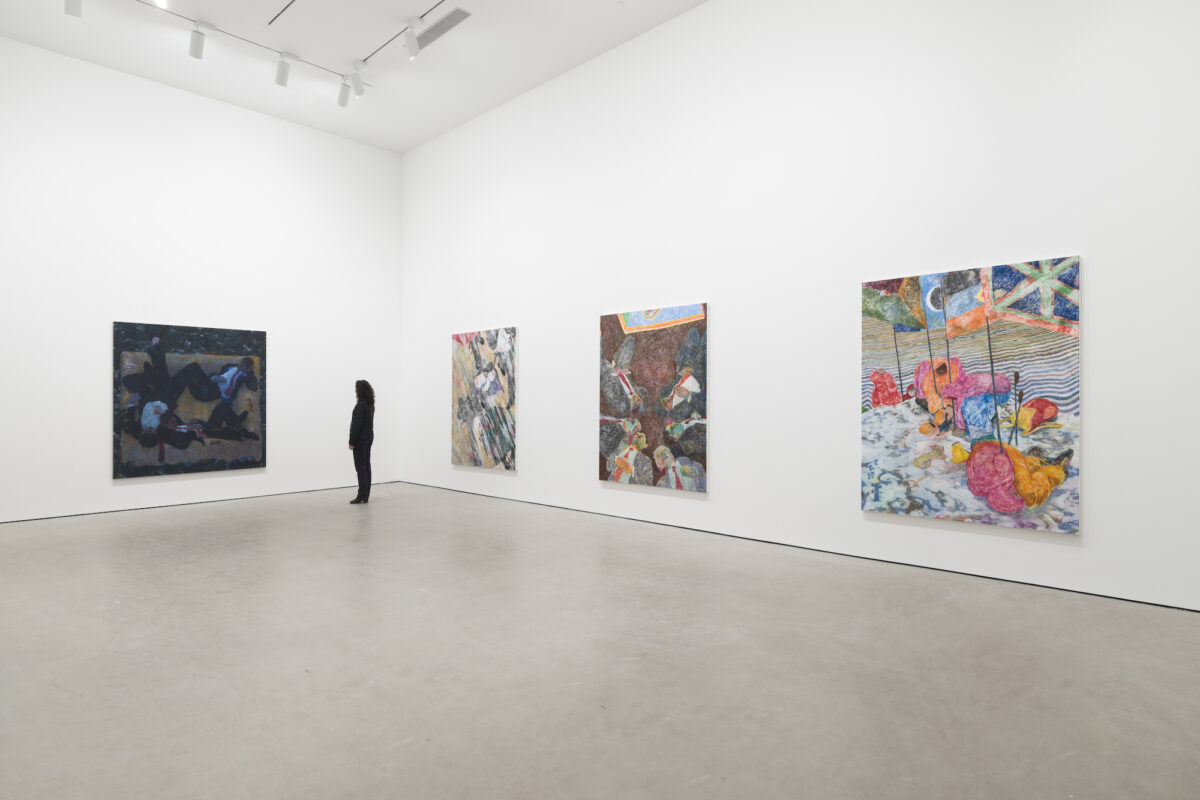
The demise of the salaryman and hierarchical structures are not met with solutions, but matter of fact examination. According to the American dream of record, turning up every day, working hard, and using resources to the best of abilities, yields to assured success. This foretold destiny has been disproven time and time again, leading to a general philosophical despair. The precarity of status is absorbed into Curchod’s visual imagination, as he represents suited men and cardboard boxes.
The problem of representation is also subsumed into Curchod’s strategy. One may detect the Cubist tendency toward formal distortion embedded within the artist’s language. Furthermore, inflections of Ernst Ludwig Kirchner’s expressionism meet the freneticism of William Groper’s feverish cartoons. Whether foreshortened or elongated in extremes, Curchod’s bodies are never rendered in service of perfection. From his vantage point, beauty and formalism are not entirely helpful in figurative painting
unless they aid in outright visual communication.
While systematically criticizing the common failure of imagination, Curchod still manages to embed humor and existential curiosities into his image-worlds. His jazz-like production encourages play in its making, which is communicated to the viewer by way of unorthodox ground relationships and distinctive color systems. Curchod’s rhythmic universe is wrought with multiplicitous energies, all of which remain tethered to a belief system that situates drawing as the supreme modality.
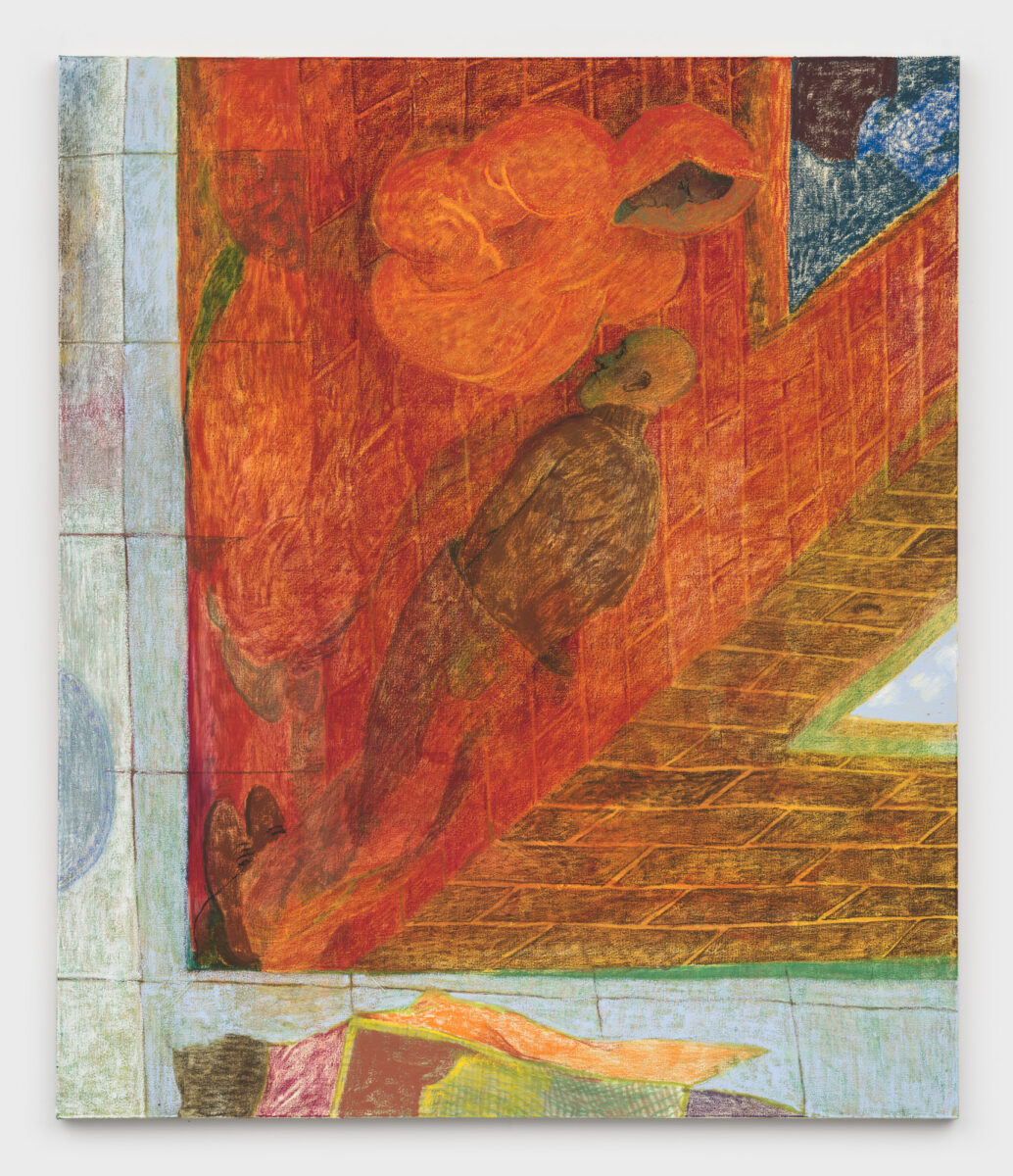
Henry Curchod, OH FORTUNA ! March 9th, 2024, CLEARING New York
All photography © JSP Art Photography, Courtesy: Courtesy of the artist and C L E A R I N G, New York / Brussels / Los Angeles
About the artist
Henry Curchod (1992 in Palo Alto, USA) lives and works in London. He received his BFA from University of New South Wales in 2014. Solo exhibitions of his work have been held at Gallery Vacancy at Paris Internationale, Paris; Shoot the Lobster, New York; Mamoth, London; Chauffeur, Sydney; Tristian Koenig Gallery, Melbourne; Sumer Gallery, Tauranga; Martin Browne Gallery, Paddington; Campbell Projects, China Heights, Sydney; The New Standard Gallery, Sydney; China Heights Gallery, Sydney; JOYA Projects, Manilla; and Smith Street Gallery, Melbourne.
His work has been included in group exhibitions at Gallery Vacancy, Shanghai; Art Gallery of South Australia, Adelaide; Spurs Gallery, Beijing; Mamoth, London; LAILA, Athens and Vienna; Martin Browne Gallery; Brett Whiteley Gallery, Sydney; Chauffeur HQ, Sydney; Burton Projects, Sydney; Fortyfive Downstairs, Melbourne; Tristian Koenig Gallery, Melbourne; LM Gallery, Latina; Mosman Art Gallery, Sydney; and China Heights Gallery, Sydney
